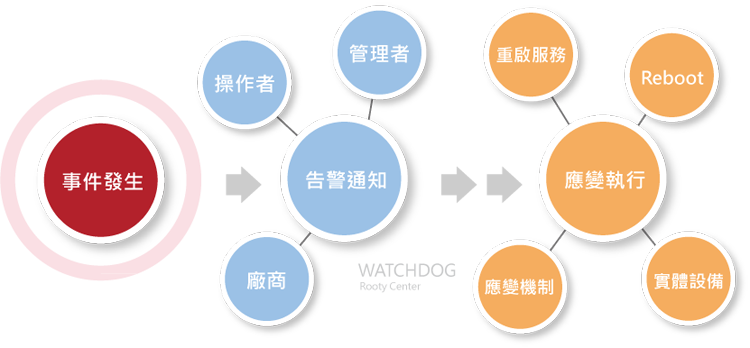
Amid the rapid development and transformation of information technology, one of the major challenges in operations management is how to efficiently utilize professional talent.
Misallocation and improper utilization of talent not only impact operational efficiency but also increase unnecessary costs and team stress.
The key lies in placing the right talent in the right positions at the right time to fully leverage their professional capabilities.
This chapter delves into how innovative tools can optimize IT operations management, ensuring that professional talent maximizes their utility in the information technology environment.
In today's human-centric IT operations management mindset, we face a series of challenges and dilemmas.
Improper job arrangements for system personnel not only put professionals in awkward positions but also prevent them from achieving expected efficiency and cost-effectiveness.
Here are some common scenarios in the field of system operations:
➣ Repetitive daily testing work like a robot, consuming personnel's energy and testing their patience and perseverance.
➣ The mode of waiting for abnormal events to occur and then handling them urgently after notification, putting personnel under significant time pressure.
➣ A large amount of manpower and time required for regular inspections and periodic system checks, resulting in inefficiency.
➣ Lack of effective system testing benchmarks and automated system tools, making operations cumbersome and inefficient.
➣ When a system problem arises, often not knowing the root cause, lacking related data and analysis support, and blindly seeking solutions.
➣ Personnel can only seek answers within their familiar domain due to the inability to simultaneously master knowledge across all fields, limiting the breadth and depth of problem-solving.
➣ Facing complex system issues, with many related factors and interconnected equipment, making it difficult to check each one.
➣ In tracking issues, if unable to coordinate across system domains or departments, problems are often ignored or superficially resolved, leaving potential recurring issues.
➣ When a system issue occurs, mutual blame between different departments or vendors is common, wasting time and harming team harmony.
These challenges highlight an important reality: relying solely on manpower for operations management is no longer viable in the current IT environment.
Therefore, given the established personnel configuration, we urgently need to introduce intelligent tools and system support to achieve automated operations management.
Through this approach, even in the absence of flexible personnel adjustments, we can effectively improve work efficiency, address current manpower shortages, and mitigate the negative impacts of personnel changes.

As enterprises and government agencies increasingly rely on information systems, how to effectively reduce operations costs while ensuring high efficiency and stability of systems becomes crucial.
The focus is on how to improve the efficiency of system administrators and the reliability of system usage, seeking solutions through the application of system tools and institutional norms.
In seeking solutions, we emphasize several core strategies to achieve high-efficiency management:
➣ Transform the roles of system personnel so that one person can handle the work of multiple individuals, enhancing personal efficiency and versatility.
➣ Introduce automated timed detection systems, automating most time-consuming testing tasks, freeing up human resources, and preventing personnel from becoming mere mechanical operators.
➣ Establish proactive pre-warning mechanisms, shifting from passively receiving abnormal notifications to actively monitoring and preventing system anomalies.
➣ Utilize integrated equipment and information association to strengthen horizontal communication between different departments, improving the efficiency and accuracy of problem-solving.
➣ Choose localized system tools and software that are easy to learn and quickly deploy, shortening the learning curve for system personnel and accelerating practical application.
➣ Implement management tools systems with educational and training value, reinforcing the application skills and knowledge gaps of IT professionals.
➣ Establish unified operational norms, reducing learning time costs, and enhancing IT professionals' adaptability and management efficiency in dynamic environments.
➣ Implement seamless system handover models to ensure that personnel changes do not affect the overall operations of the information center, ensuring continuous stable system operation.
➣ Allow system personnel to focus on professional tasks requiring deep thinking and communication, using automated systems to complete routine tasks, achieving optimal talent utilization and value realization.
➣ Extract effective system management norms from real-time information, establishing quick response and problem-solving processes, and bridging cross-department communication, fundamentally enhancing operational efficiency.
➣ Select high-availability and high-quality IT equipment, meticulously configuring systems to reduce unnecessary issues and improve overall system reliability.
In the world of IT operations, cross-system communication often becomes a complex and challenging issue.
Operations system personnel and application system administrators often belong to different units or departments,
while the smooth operation of application systems depends on the performance, resources, and stability of underlying systems such as networks, hardware, and operating systems.
This interdependent relationship means that problems in any part can affect the overall system.
When a system issue arises, possible causes span across network, hardware, operating system, application system, and middleware layers.
In such cases, accurately collecting related data and system settings is key to tracking and resolving issues.
Effective management techniques should cover multiple aspects including professional personnel, management norms, application tools, and communication coordination, ensuring that equipment and systems can quickly resume normal operations.
Equipment and system issues are inevitable, but how to quickly resolve these issues and reduce their frequency is key to evaluating operational performance.
System personnel often need to race against time in handling issues, identifying problem signs based on different risk factors and indicators.
In the IT operations process, we often encounter various abnormal situations. These situations, depending on their nature and impact, can be categorized as follows:
● Most Common Abnormal Situations:
➣ Gradual: For example, memory load increases daily without signs of recovery, causing users to feel slow access speeds.
➣ Sudden: For example, hard disk failure or sudden interruption of service programs.
➣ External Intervention: For example, power outages or accidental shutdowns caused by mistakes.
➣ Unexplained: For example, unexpected crashes or sudden network disconnections.
● Handling Procedures:
➣ User discovers the problem: Notification -> Problem resolution -> If unresolved, improvement or reboot.
➣ Administrator discovers the problem: Problem resolution -> If unresolved, improvement or reboot.
● When the problem cannot be solved or the exact cause cannot be determined, steps include:
➣ List all possible related factors and perform debugging procedures.
➣ Seek assistance from relevant equipment departments or original manufacturer professionals to understand the problem's impact in terms of settings, functionality, performance, control, and programs.
➣ Seek third-party assistance for more resources and knowledge to resolve the issue.
In the process of IT operations, cross-department communication often faces many challenges, including high communication costs, misunderstandings due to inconsistent information, and unclear responsibilities in problem localization.
These factors not only delay problem resolution but also increase the complexity and difficulty of operations. Therefore, effective communication and problem-solving mechanisms are crucial.
Faced with these challenges, having an accurate and intuitive system tool becomes critical.
If a tool can provide a common platform, allowing personnel from different departments to communicate based on the same information and data, reducing misunderstandings and communication costs,
and more importantly, can quickly and accurately localize problems, clearly define responsibilities, and effectively avoid blame-shifting situations, this is the core concept of our product design.